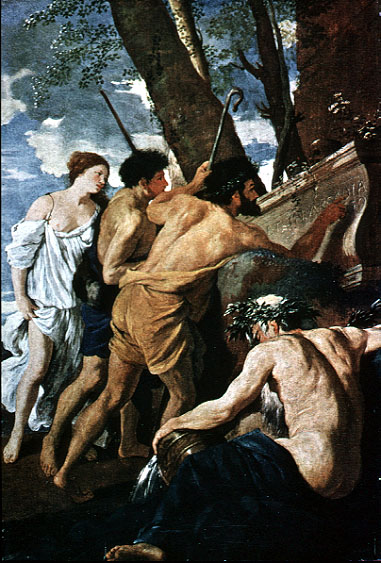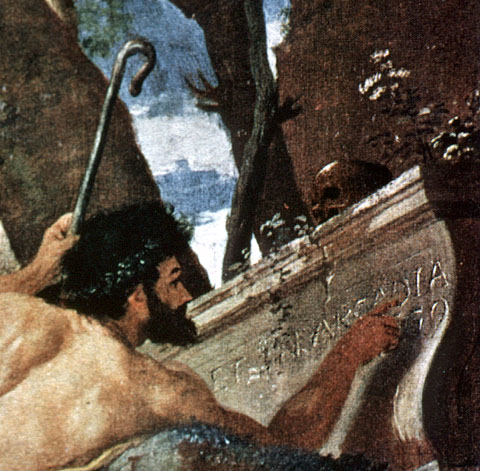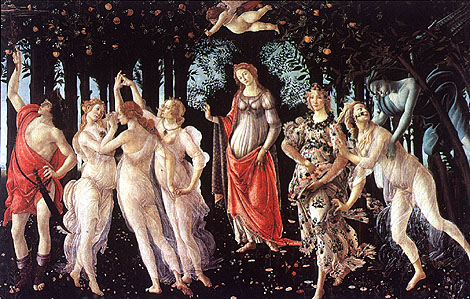
Nicholas Poussin, Et in Arcadia Ego, 1630s
The shepherds and shepherdess in this painting (1630s) by Nicholas Poussin have just come across a tombstone, on which they read the inscription, "Et in Arcadia ego." This can be translated as "I too am present in Arcadia" or " I am present even in Arcadia" (Arcadia is the traditional name for the idealized landscape of pastoral). The identity of the inscription's "ego" or "I" is made plain by the skull on top of the tombstone. (Click on the detail to see the inscription and the skull .) The shepherds react with shocked urgency to this revelation about the transitoriness of human happiness. Even in pastoral's ideal landscape, we are reminded of our mortal limits. (See posting , 12/1/97, on Newsgroup, from L. Danson.)


